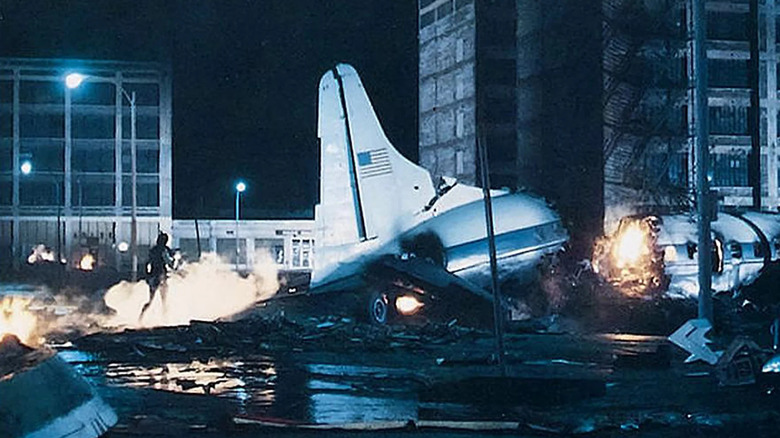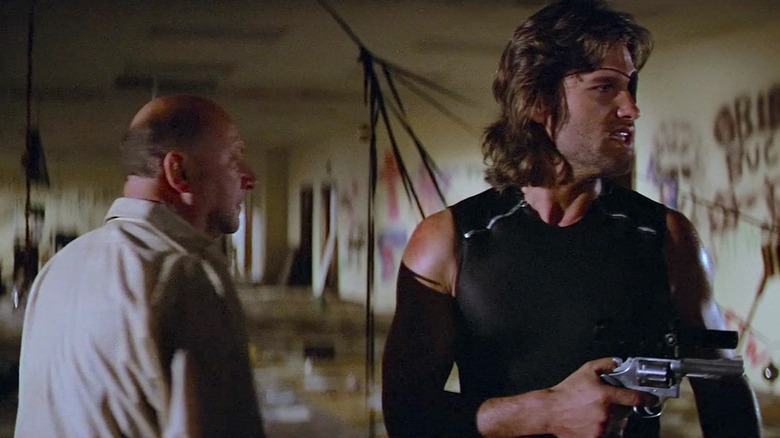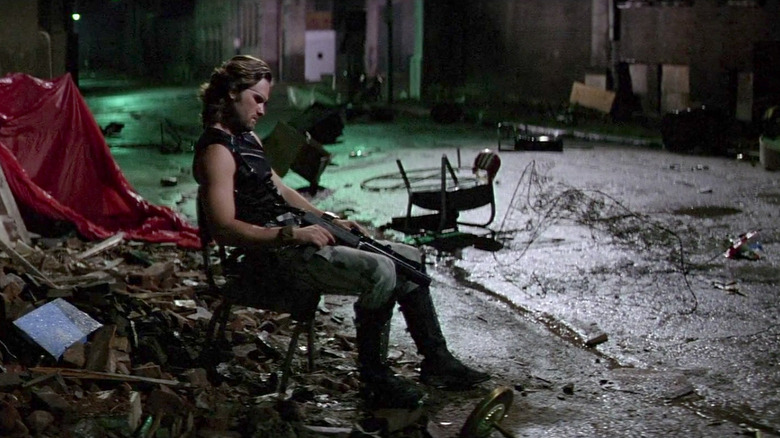How Escape From New York Found The Perfect Location For Its Dystopian Version Of The City
The term "movie magic" exists for a reason. Hollywood has been creating impossible worlds for us to escape to for more than a hundred years. Although the film industry got its start in New York City, borrowing talent from the theater for early productions, the movie business quickly settled in Los Angeles.
The diverse climate and landscape of Southern California allowed filmmakers to mimic virtually any location on Earth ... and sometimes beyond. You'd be surprised how easily you can make a desert look like Mars. Between practical locations, sound stages, and special effects, Hollywood can bring just about any setting to life on the big screen.
But how do you create a dystopian New York City on a minimal budget? That was the task for writer/director John Carpenter when he made "Escape From New York." The film was released in 1981, long before you could digitize everything in front of a green screen. To make it happen, Carpenter left NYC altogether and set his sights on the unlikeliest of locations: The Midwest, on the banks of the Mississippi River.
A vigilante architect inspired the film
Because of its recognizable iconography, New York City is an easy target for all sorts of disasters in cinema. From King Kong climbing the Empire State Building to the Stay Puft Marshmallow Man crushing a Central Park church in "Ghostbusters," it seems no borough is safe from Hollywood. When John Carpenter decided to turn an entire city into a prison, why not Manhattan?
After making a name for himself with the horror films "Halloween" and "The Fog," Carpenter shifted genres with the sci-fi action movie "Escape From New York." In the movie, criminal Snake Plissken (Kurt Russell) is cajoled to venture into the lawless prison city of Manhattan Island to rescue the president after an Air Force One plane crash.
Carpenter told It Came From that he got the idea for the movie years earlier when watching "Death Wish." He said:
"New York was having some big, giant problems at the time, I'm thinking bankruptcy and a crime problem. And this Charles Bronson movie, 'Death Wish,' came along and he was a vigilante architect, of all things. And something about the movie struck a chord with me....I read a Harry Harrison story, there was this planet, the toughest, most evil place in the universe. So who're you going to choose to go in there and do something with some mission? The most evil guy in the universe. That idea stuck with me, and I thought of writing this kind of dystopian future story about New York as a prison and a guy has to go in to rescue the president."
But with a meager $6 million budget, building practical sets in New York City wasn't an option. Instead, Carpenter looked to another city that had already faced its own disaster.
St. Louis doubled as NYC
Carpenter used "Escape From New York" to showcase his ingenuity as a filmmaker. He shot just enough of the city to establish the location while creating an unrecognizable dystopian version of Manhattan somewhere else. Filming in New York wasn't an option, but Carpenter found a workaround on the shores of the Mississippi River. He explained:
"So we found St. Louis had had a fire in the mid-'70s and their downtown area was just ruined. And it was desolate. They had a lot of decrepit stuff around, so we found a location that worked that let us get the spectacle that we needed. Therefore, the movie didn't suffer a small look. It had a big look."
Along with St. Louis, Carpenter used matte paintings and additional locations in and around Los Angeles to complete the dystopian vision of NYC. Movie-Locations.com notes that a brief skyline pan and a shot on Liberty Island are the only two shots from New York City itself. The Mississippi River also made a nice stand-in for the Hudson River. The film's ending features a futuristic bridge that is actually California's Sepulveda Dam, built in 1941.
With "Escape From New York," Carpenter proved that Hollywood magic is indeed real, though sometimes you have to get creative. "We knew it was going to go because it had a green light, so we were going to shoot the movie no matter what," Carpenter said. "The question was how big a spectacle could we afford to make." The spectacle was big enough to turn "Escape From New York" into a cult classic. It also led to a sequel in 1996, "Escape from L.A." Only this time, Carpenter didn't have to worry about his budget, which was almost ten times the size of the original.


